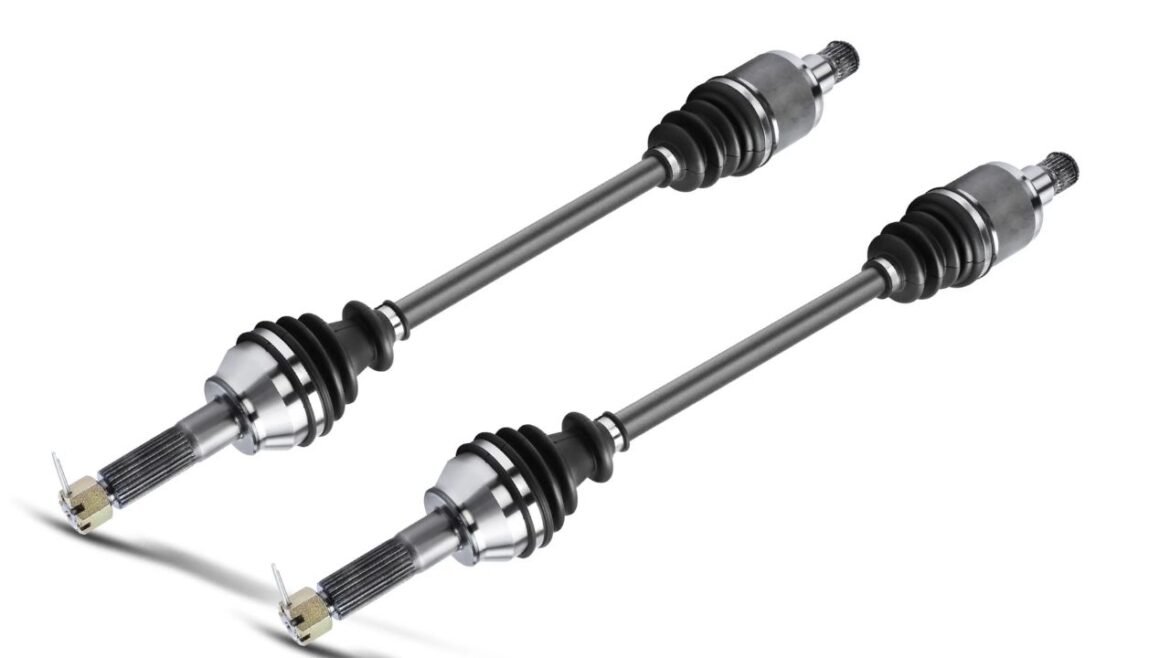In the intricate realm of modern vehicles, there exists a crucial player known as the Constant Velocity (CV) axle shaft. This article will delve into the intricacies of A-Premium cv axle shaft, exploring their key components, functions, and the significance of proper maintenance.
Components of a CV Axle Shaft
The CV axle shaft, a linchpin of the drivetrain system, comprises several essential components that collaborate to ensure a seamless power transfer from the engine to the wheels. The core constituents of a CV axle shaft encompass:
- Axle Shaft: The backbone of the CV axle shaft, this hardened steel shaft shoulders the responsibility of transmitting power from the transmission to the wheels. Its robust design enables it to endure the engine’s torque demands.
- Inner CV Joint: Nestled at the transmission end of the axle, this joint serves as the bridge connecting the axle shaft to the transmission. Beyond facilitating vertical suspension movements, it’s instrumental in adapting to changes in steering angles.
- Outer CV Joint: Found at the wheel end of the axle, this joint forges a connection between the axle and the wheel hub assembly. The outer CV joint ingeniously accommodates power transmission while embracing the rotational needs of steering.
- Boots: These protective rubber or thermoplastic shields shroud the CV joints, keeping them adequately lubricated and shielding them from the infiltration of dirt, debris, and moisture. Maintaining the integrity of these boots through regular inspections is paramount to stave off untimely wear and damage.
Function of CV Axle Shafts
The CV axle shaft’s central role revolves around the seamless transfer of torque from the engine to the wheels. However, its prowess lies in its capacity to adapt to various driving scenarios:
- Constant Velocity: The CV axle shaft’s name pays homage to its unwavering ability to maintain a steady rotational speed, even when faced with the fluctuations of suspension movements and wheel turns. This attribute quashes any jarring vibrations, ensuring a smooth power transmission.
- Flexibility: Engineered with a design that prioritizes flexibility, the CV joints effortlessly embrace the range of motion necessitated by suspension shifts and steering angles. This innate flexibility curbs binding, enabling the wheels to navigate vertical motions while upholding a constant velocity.
- Steering Mastery: The CV axle shaft takes on a pivotal role in the steering mechanism. As the wheels pivot left or right, the CV joints adroitly flex to accommodate the change in angle, all while ensuring an uninterrupted flow of power.
Importance of Adequate Maintenance
The significance of proper maintenance for CV axle shafts cannot be overstated, as it directly influences the vehicle’s longevity and reliability. Neglecting maintenance can usher in a host of complications, including:
- Boot Safeguarding: Cracks or ruptures in CV joint boots can expose the joints to contaminants like dirt and moisture, leading to premature wear. A vigilant eye and timely replacement of compromised boots can stave off the specter of costly joint failures.
- Lubrication Vitality: Optimal lubrication is the lifeblood of CV joints. Insufficient lubrication due to damaged boots or subpar maintenance can trigger friction and wear, potentially heralding the need for complete axle replacements.
- Vibration and Sound Woes: Worn-out CV joints can manifest as bothersome vibrations, accompanied by clicking or clunking sounds, particularly during turns. Neglecting these auditory and sensory cues can pave the way for escalated damage, compromising driving safety.
- Total Breakdown: A complete CV axle shaft failure translates to a loss of power transmission to the wheels, resulting in a non-functional vehicle. The ramifications can be dire, especially if this failure transpires while the vehicle is in motion.
Conclusion
The CV axle shaft takes center stage as a linchpin in the vehicle’s drivetrain system, orchestrating the efficient transmission of power while adeptly navigating suspension shifts and steering angles. Its ingenious design and constituent parts ensure constant velocity and flexibility, culminating in a safe and smooth driving experience. The judicious upkeep, including the periodic inspection and replacement of compromised CV joint boots, is the linchpin to forestalling premature wear and sidestepping costly repairs. Armed with a comprehensive understanding of the components, functions, and imperative role of upkeep for CV axle shafts, vehicle owners can guarantee the roadworthiness and dependability of their cherished automobiles.
